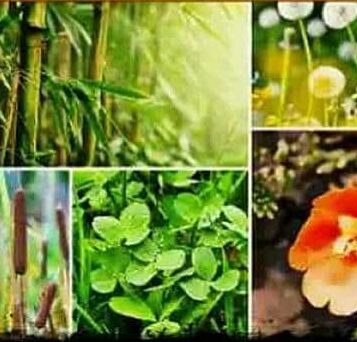
Knowing a few common wild edible plants and flowers is extremely valuable when in survival mode. Heck, most of these might even make it into your kitchen regularly. But if fate hands you a raw deal, look for these best wild edible plants to help sustain.
TOPICS IN THIS LIST… ↓(click to jump)
↓ 11 Easy Edible Plants for Beginner Foragers
The 13 Best Wild Edible Plants
1. Dandelions
We are all familiar with this common lawn weed, but few people realize that this plant can be eaten from top to bottom. Pull the yellow flower from the plant and eat it raw.
Leaves and roots can also be eaten, but leaves taste their best when the plant is young. Older leaves can have more of a bitter taste. Leaves and roots taste better after being boiled.
My grandmother would boil young dandelions and put them in the refrigerator to cool off. After cooling, she added olive oil, vinegar, oregano, and pepper. For a picky kid, they weren’t bad at all.
If I were in the middle of nowhere, I’d boil them, eat them, and thank God I found them.
↓ The Best Way To Eat Dandelion Flowers
2. Cattails
We tried cattails in Boy Scouts. They were a staple for Native Americans.
The tips and the white-colored bottoms of the stalks are edible, raw, and palatable. But be careful not to eat the fiber as it may cause a stomach ache.
They’re one of the best wild edible plants that provide an excellent starch source.
You can also mix Cattail pollen with flour and egg to make cattail pancakes. Try gathering the pollen from the top of this plant in late June and early July.
You’ll know you’ve hit the pollen when your hands turn yellow.
↓ Harvesting and Cooking the Cattail Root
3. Wild Asparagus
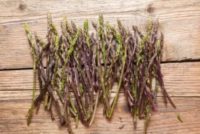
This wild edible plant is hardy. Look for old dead stalks about three feet high. Near those, new young stalks can be found.
Wild asparagus doesn’t like soil that’s too moist. It can usually be found along ditch banks or next to railroad tracks. When we were kids, we picked it along the tracks when we were pheasant hunting.
At least we came home with something! You can usually find wild asparagus if you live where summers are dry.
Wild asparagus stalks are usually thinner than those you see at the supermarket. If you cut a stalk as close to the ground as possible, a new stalk will grow back. Eat wild asparagus by boiling, or steaming.
↓ Foraging for Wild Asparagus!
4. Milk Thistle

Boil the stalks. Or boil/bake the plant’s roots.
↓ How To Harvest, Prepare, and EAT Wild Thistle!
5. Clover

Flour can also be made from dried clover flowers and seed pods. Tea can also be made from clover and steeped in water. Everybody needs a little luck to get out of a survival situation, so try not to eat the four-leaf ones.
↓ Wild Edibles: Clover (Free Food In Your Lawn)
6. Wild Onions

The same rule applies to garlic.
Wild onions grow in damp places, especially on the forest floor. All wild onion plants can be eaten from top to bottom. It can be eaten raw, cooked, or with other greens.
↓ WILD ONIONS (Catch, Clean, and Cook)
7. Bamboo
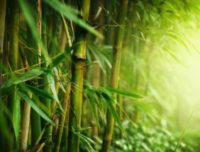
Bamboo cannot be eaten raw. Peel the outer leaves.
Remove any tough parts of the shoots. Cut them into 1/8″ slices and boil them uncovered for at least 20 minutes or longer to rid them of bitterness. They can then be eaten alone or with other greens.
Bamboo shoots are high in fiber, protein, and potassium. Dry bamboo also makes excellent kindling for a fire if caught in a survival situation.
↓ Harvesting & Prepping Bamboo To Eat!!

Want a free 54 item survival gear checklist?
Enter your email below to instantly download this Complete Checklist PDF. No purchase necessary. 👇 👇8. Purslane

It’s one of the most nutritional edible weeds with high Omega-3 fatty acids and beta-carotene.
Eat raw or cook purslane. It’s making its way onto restaurant menus, so it’s good enough for a restaurant. So it’s good enough for somebody in the middle of nowhere with few nutritional choices.
Wherever you find purslane, it will be around for a long time. Its seeds have been viable in the soil for well over 30 years. Like asparagus, once it’s there, it will always be there.
↓ My Favorite Weed to Forage & Eat – Purslane! It Grows Everywhere!
9. Violets

Be sure not to eat the roots or stems and avoid African Violets. Violets have also been used medicinally.
A common headache cure is to soak violet on a towel and apply to the back of the neck.
↓ How to Eat Violets
10. Day-lily
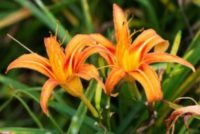
Don’t damage the flower stalks when cutting the leaves because the daylily can be cut again when the buds and blossoms are present. Boil or stir fry the buds.
Partially or fully opened daylily flowers can be battered with flour and water and fried. The roots of the daylily are also edible, either raw or boiled.
They pack high nutrition in the late fall after storing vitamins and minerals from the summer season.
↓ How to Eat Daylilies | Wild Foraging IN YOUR YARD
11. Berries
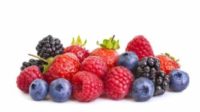
White, yellow, and red berries can kill. Stay away from them unless you are certain, especially in a survival situation. Although grapes are not necessarily berries, I don’t know of a single type of grape that can’t be eaten.
If the birds have eaten all the grapes, pick the smaller grape leaves and dry them for a few days. And then boil them for about 20 minutes.
Wrap any meat in the leaves. If there’s no meat, eat the grape leaves by themselves.
I’ve eaten at least 10,000 of them and never got sick. Although they have relatively low caloric value, they’re rich in vitamins and fiber. I’d even eat them raw after washing them if I had to.
↓ Wild Edible Berries – Foraging for Berries
12. Acorns

It has a unique taste, and the properties will make baking slightly different. However, you should try a wild edible plant as a last resort food source or as a way to use what nature provides.
↓ How to make acorns edible
13. Wild Lettuce (Lactuca Canadensis)

Wild lettuce makes wild lettuce extract. This extract has many medical benefits. So it’s worth finding, foraging, and harvesting if you come across any of it!
↓ Forage And Eat Wild Lettuce (Lactuca Canadensis)

Want a free 54 item survival gear checklist?
Enter your email below to instantly download this Complete Checklist PDF. No purchase necessary. 👇 👇You Can Never Be Too Careful
Always be sure of what you’re going to eat. Some plants might look like one of these best wild edible plants, but instead, they can sicken or kill you. One suggestion is to eat only a small portion of a plant and then wait an hour to see how your body reacts.
Beware of plants closer to civilization or roadways, as they may have dangerous chemicals. If a plant smells like almonds, never eat it. That’s the smell of cyanide.

Prepare, Adapt & Overcome,
P.s. - I just found out 2 out of 3 Americans don’t feel prepared for a 3 day disaster!!!
I guess this goes to show how modern society continues to embrace ‘living a fragile life.’ What’s crazy is… it’s so easy to fix.
To make sure YOU have the basics, watch our FREE training on “10 Simple Steps To Basic Preparedness” that shows you HOW.
Nothing crazy here… this isn’t doomsday prepping... just the basics every responsible adult should have before a disaster strikes.Why You Can Trust Skilled Survival...
Go here now to review a full breakdown of:
- Who We Are
- Our Credentials
- Our Mission
- & Product Recommendations...
Here are a few highlights of our teams credentials & certifications:
- Certified Member of a Mountain Search & Rescue Organization
- Plant Emergency & Safety Leader for a Major Food Manufacturer
- Member of the 10TH Mountain Division Hut Association
- Certifications: Avalanche 1, WFR, CPR
- Official Gear Tester for Numerous Outdoor Gear Companies
- Countless Multiday Backpacking trips into Remote Wilderness
- Bachelor's Degree In Mechanical Engineering
- Bachelor's Degree In Civil Engineering
- Bachelor's Degree In Biomedical Engineering
"It takes 20 years to build a reputation and five minutes to ruin it." - Warren Buffett
We're fully aware that trust is NOT something you GET but is EARNED.
And we'll continue to earn YOUR trust through our forthright and honest approach with each new Blog Post, Guide & Product we create...
P.s - I just took this FREE 60-second 'Readiness Score Quiz'👇
AND... I've still got a few gaps in my preps...🤔 But at least, I'm not part of 'The Fragile Masses'. 👍 Find out where YOU stand by answering a few questions...

Recommended Reading
Survival Pack: How To Build One NOW (before SHTF)
A complete list of critical items that need to be in your survival pack before heading out into the wilderness.
Survival Packing List: Best For An Evacuation
Everyone needs a survival packing list to organize their escape. That way you won't regret leaving something critical behind.
How To Make Catfish Bait: My Grandpa’s Ultimate Recipe
I want to share with you what I consider the best catfish bait recipe. Here's how to make stink bait that will get the catfish to bite.
Paracord Projects: 17 Useful Survival Tools You Can Make Today
I share the best paracord projects that are both fun and useful. By doing these crafts you'll always have lifesaving cordage on hand.
Survival Skills: The Ones Everyone Should Master
The best survival skills will keep you alive even in extreme conditions. 1. Water 2. Shelters 3. Fire 4. Navigation 5. Signaling 6. Medical
Cold Weather Survival: Unexpected Ways To Stay Warm
In a cold weather emergency, you can be a cold weather survivor or a victim. These critical skills will help you stay warm & alive.




